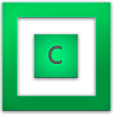Howdy, Stranger!
It looks like you're new here. If you want to get involved, click one of these buttons!
covecube.com
community.covecube.com
blog.covecube.com
wiki.covecube.com
bitflock.com
stablebit.com
Categories
Poll
No poll attached to this discussion.In order to better support our growing community we've set up a new more powerful forum.
The new forum is at: http://community.covecube.com
The new forum is running IP.Board and will be our primary forum from now on.
This forum is being retired, but will remain online indefinitely in order to preserve its contents. This forum is now read only.
Thank you,
Feature Request
I for one would like to see the ability to add drives to the pool without needing to assign a drive letter to them. Right now you are limiting a user to 23 drives (26 letters - A,B, and C). That may see like a lot, but there are plenty of users that meet or exceed that number. Plus, it will clean up the console a bit, not presenting the DrivePool drives to the default storage/hard drive tab.

 Download your copy of the StableBit DrivePool, StableBit Scanner or StableBit CloudDrive here
Download your copy of the StableBit DrivePool, StableBit Scanner or StableBit CloudDrive here Follow Covecube on Twitter.
Follow Covecube on Twitter.
Comments
In my opinion having it work like you describe is perfect, where it is actually mounted shouldn't really matter to a users, maybe the user could be presented a choice to assign driveletters or not, but only for the user to use them, not DrivePool itself.
And about the backup, who needs backup (like implemented in WHS) if we have folder duplication? The only backup I desire is off-site backup and I would use something like Live Mesh 2011 for that.
Cheers,
Danee
I would like to chime in with my support for such a feature. In fact, I just used Stablebit's "Contact Us" form to drop you a similar note. I'm sorry I didn't come across this forum thread beforehand.
I would leave the folder mount point up to the Stablebit software. I would not present any option to the user unless absolutely necessary. The manner in which your software currently works appears to function in a similar manner, though all folder and duplication needs are automated.
To your question about what would happen when a user adds a drive to the system... I need to qualify my statement by saying that my test system is a custom build. I have to manually mark my disks as "Online" and assign them a drive letter before the WHS 2011 console will recognize them. Hypothetically, your software can detect the disk once it's marked as "Online". I'm already going through the rigamarole of manually mounting disks because my hardware configuration requires it. While I'm sure this won't be the case for users buying into various OEM products, for the custom builders out here (such as myself) the idea of having to use your add-in within the console to define a few parameters shouldn't be an overwhelming process.
As to your question about backup, I'm riding with Danee's comment above. I am a power user. Your software (assuming it works correctly) offers duplication. I will continue to manually run backups for offsite disks.
Thank you for taking the time to field our questions and for listening to our needs.
Cheers,
-H
The advantage of a hidden disk would be that it would not consume a drive letter.
A disadvantage would be that you won't be able to put non-pooled data on it (at least not easily).
Cheers,
Danee